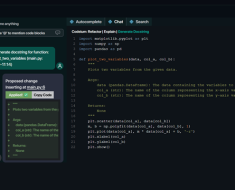Machine learning plays a crucial role in authorship analysis, cybersecurity, and UX writing. In the realm of cybersecurity, machine learning aids in authorship analysis of web content, as demonstrated by an automated approach that leverages this technology. Furthermore, the intersection of artificial intelligence and cybersecurity is evident in the revolution brought about by ChatGPT, a language model powered by machine learning algorithms. Additionally, machine learning frameworks are proposed to discern cyber threats on social media platforms like Twitter, demonstrating its versatility in threat analysis and detection. On a different note, AI is also utilized in UX writing, enhancing copy generation for e-commerce through improved tone and style across various product listings.

In the realm of cybersecurity, the integration of machine learning has revolutionized several key fields, enhancing the capabilities of defense mechanisms against evolving threats. One notable area where machine learning showcases its prowess is Intrusion Detection Systems (IDS). Machine learning algorithms, particularly those related to anomaly detection, contribute significantly to fortifying IDS. By learning and adapting to normal network behavior, these algorithms can swiftly identify deviations that might indicate a potential cyber threat, creating a dynamic defense strategy against diverse intrusions [1].
Malware Detection and Analysis is another critical field where machine learning plays a vital role. The sophistication of modern malware demands advanced defense mechanisms. Machine learning leverages its pattern recognition capabilities to discern intricate patterns in the code and behavior of malicious software. By constantly learning from new malware variants, machine learning models become adept at identifying and thwarting previously unseen threats, contributing to the proactive defense against the ever-evolving landscape of cyber threats.
Phishing attacks, known for their increasing sophistication, have prompted the application of machine learning in Phishing Detection. Machine learning algorithms, particularly those focusing on natural language processing, analyze email content and user behavior to identify phishing attempts. This proactive approach assists in mitigating the risks associated with social engineering attacks, preserving the integrity of digital communication channels [2].
The application of machine learning extends seamlessly into Network Security. Automated algorithms can analyze network traffic patterns, identifying anomalies or suspicious activities that might signify a potential cyber threat. This real-time analysis allows for swift responses, fortifying the network against malicious intrusions. The proactive and adaptive nature of machine learning aligns with the requirements for safeguarding interconnected systems in an ever-evolving threat landscape [1].
In the field of User Behavior Analytics (UBA), machine learning provides a sophisticated approach to identifying abnormal patterns in user actions. By establishing a baseline of normal user behavior, machine learning models can quickly detect deviations that might indicate a compromised account or malicious activity. This significantly enhances the ability to identify and respond to insider threats and other forms of unauthorized access [2].
Furthermore, Automated Threat Intelligence is another domain where machine learning excels. By analyzing vast amounts of data from various sources, machine learning models can identify patterns and correlations that human analysts might overlook. This assists in the swift identification of emerging threats and provides valuable insights into the tactics and techniques employed by cyber adversaries [2].
The convergence of machine learning and cybersecurity is most evident in Adaptive Authentication Systems. These systems utilize machine learning algorithms to continuously assess the risk associated with user authentication. By considering various factors such as user behavior, device characteristics, and location, adaptive authentication systems can dynamically adjust the level of authentication required, providing a seamless yet secure user experience.
In conclusion, the integration of machine learning in cybersecurity is a testament to the field’s adaptability and effectiveness in addressing the complex challenges posed by cyber threats. From identifying intrusions to analyzing malware, thwarting phishing attempts, and fortifying network security, machine learning enhances various facets of cybersecurity, contributing to a more resilient and proactive defense posture.




